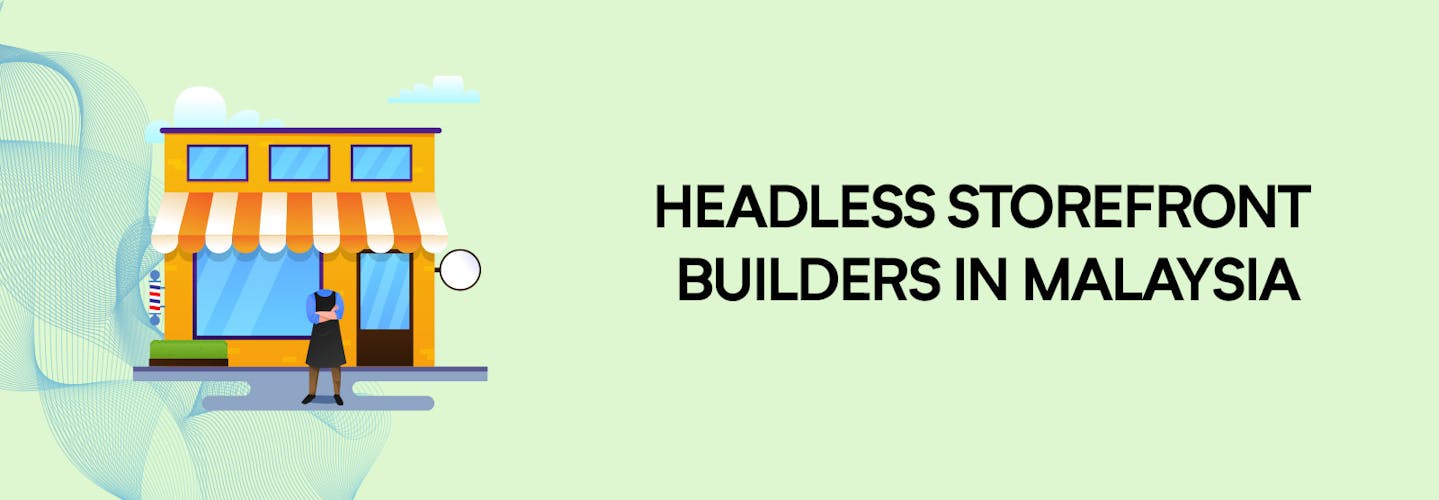
Top 10 Headless storefront builders in Malaysia 2025
In the ever-evolving world of digital commerce, one term that has been gaining significant traction is “Headless eCommerce.”
But what exactly does it mean, and why is it becoming so important, particularly in the Malaysia thriving eCommerce scene? Let’s delve into it.
What are Headless Storefront Builders?

In the world of ecommerce, headless storefront builders are becoming a game-changer.
These platforms, often referred to as “headless commerce” solutions, separate the front-end and back-end of an ecommerce platform.
This separation allows businesses to have complete control over the user experience, making it more customizable and adaptable to various devices and channels.
Why are Headless Storefront Builders Important?
The benefits of using headless storefront builders are numerous.
They provide businesses with the flexibility to create unique, personalized customer experiences.
They also offer streamlined management tools and advanced features that can help businesses grow and adapt to the ever-evolving ecommerce landscape.
Top 10 Headless Storefront Builders in Malaysia for 2023
As we look towards 2023, it’s clear that headless commerce is the future of ecommerce.
1. Aasaan App
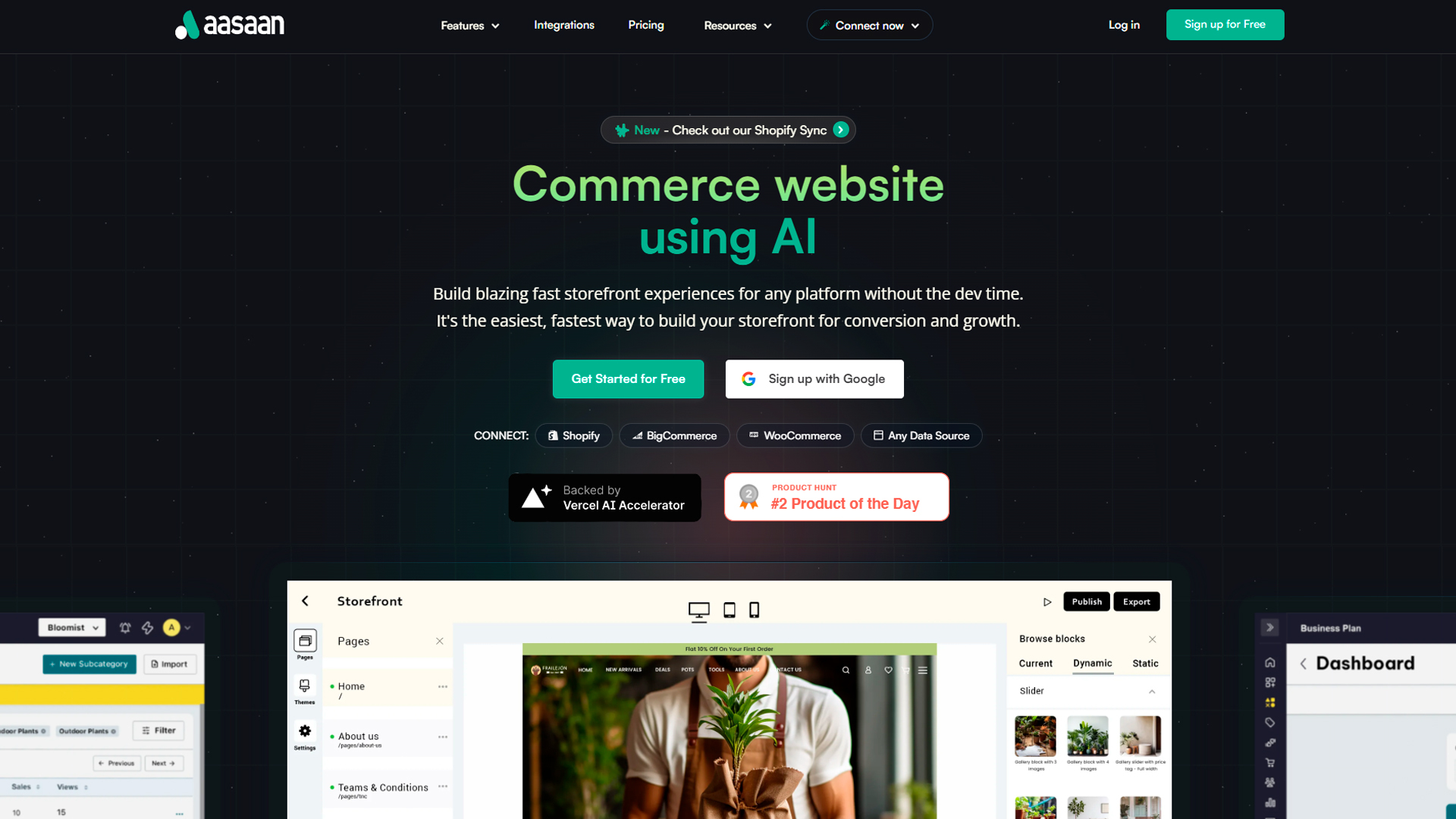
Key Features
- Aasaan App is a no-code SaaS platform that allows businesses to build a storefront and mobile apps using their template-driven front-end.
- It seamlessly integrates with your existing backend or you can start with their API-first commerce platform.
- Aasaan also offers a drag and drop builder for creating bespoke shopping experiences.
Pros
- Aasaan offers a lightning-fast site speed, which can increase the seamless shopping experience.
- It also boasts a remarkable uplift in conversion rates and a surge in average order value.
- With Aasaan, businesses can achieve a faster time to market, enabling them to stay ahead of the competition.
- It also allows businesses to manage all aspects of their business from a single admin app.
Cons
- Free plan include branding
- Don’t have feature of B2b.
Pricing
- Standard plan: For anyone to get started quickly. It costs $18 per month if billed annually or $25 per month if billed monthly.
- Premium plan: For merchants and startups to help grow business with branding. It costs $50 per month if billed annually or $65 per month if billed monthly.
- Business plan: Enables advanced merchants with advanced features. It costs $165 per month if billed annually or $200 per month if billed monthly.
- Enterprise plan: Unlimited scalability, greater control, and dedicated resources for D2C brands to scale. It requires you to contact sales for a custom quote.
2. Big Commerce
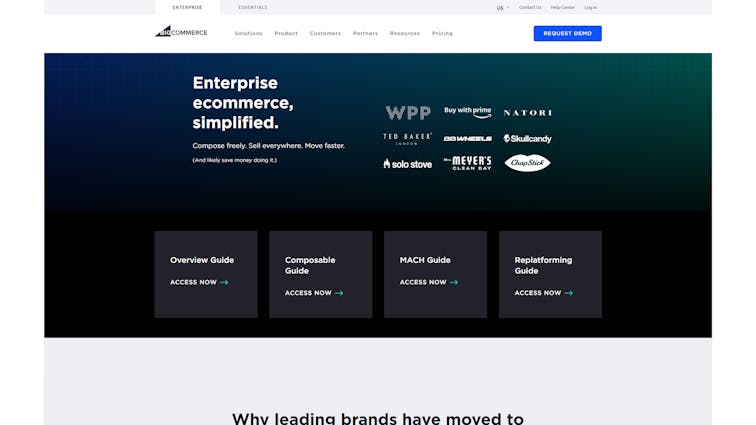
Key Features
- Comprehensive eCommerce solution with a wide range of built-in features and capabilities.
- Offers a variety of customizable templates to suit different business needs.
- Provides advanced SEO tools to help businesses rank higher in search results.
- Supports multiple payment gateways, making transactions easy and convenient for customers.
- Offers excellent customer support, with resources like community forums, online tutorials, and 24/7 live chat.
Pros
- User-friendly interface that’s easy to navigate.
- High scalability, making it suitable for businesses of all sizes.
- No transaction fees on all plans.
- Offers a 15-day free trial for users to test out its features.
Cons
- Some advanced features are only available on higher-tier plans.
- Customization can be complex for users without coding knowledge.
Pricing
- Big commerce Offers four pricing tiers: Standard ($29.95/month), Plus ($79.95/month), Pro ($299.95/month), and Enterprise (custom pricing).
3. WIX

Key Features
- Provides a drag-and-drop website builder, making it easy for users to create and customize their online stores.
- Offers a wide range of templates and design options.
- Includes a variety of eCommerce features like product galleries, analytics, and more.
- Supports multiple payment options and currencies.
Pros
- User-friendly platform that’s ideal for beginners.
- Offers a free plan for users to create a basic website.
- Provides a wide range of apps and integrations.
- Offers excellent customer support, including a help center, phone support, and a community forum.
Cons
- The free plan includes Wix ads on your website.
- Some advanced eCommerce features are only available on higher-tier plans.
Pricing
- Offers a free plan and premium plans starting at $14/month. eCommerce plans start at $23/month.
4. Woocommerce

Key Features
- Open-source eCommerce platform built on WordPress, offering high customization potential.
- Supports a wide range of plugins and extensions for added functionality.
- Provides advanced SEO capabilities due to its WordPress integration.
- Supports multiple payment gateways and currencies.
Pros
- High level of customization and control over your online store.
- Large community of developers and users for support and resources.
- No set pricing plans, making it a cost-effective solution for many businesses.
Cons
- Requires a certain level of technical knowledge to set up and manage.
- Costs can add up with the need for additional plugins and extensions.
Pricing
- WooCommerce is a free plugin, but costs can arise from hosting, domain, and additional plugins.
5. Magento (Adobe Commerce)

Key Features
- Magento, now known as Adobe Commerce, is a robust ecommerce platform that offers a wide range of features.
- It provides a flexible shopping cart system, as well as control over the look, content, and functionality of the online store.
- Magento’s marketing, SEO, and catalog-management tools are all comprehensive and powerful.
- It offers a rich set of features including B2B capabilities, business intelligence dashboards, marketing tools, content management, customer loyalty tools.
Pros
- Magento is highly customizable, allowing businesses to create a unique online store that fits their brand.
- It offers a wide range of integrations, allowing businesses to connect their online store with other business systems.
- Magento has a large and active community of developers, which means businesses can find plenty of resources and support.
Cons
- Magento can be complex to set up and manage, especially for businesses without a dedicated IT team.
- The cost of using Magento can be high, especially for small businesses.
Pricing
- Magento’s pricing is not publicly listed. It is recommended to contact Adobe directly for a quote.
6. Commercetools
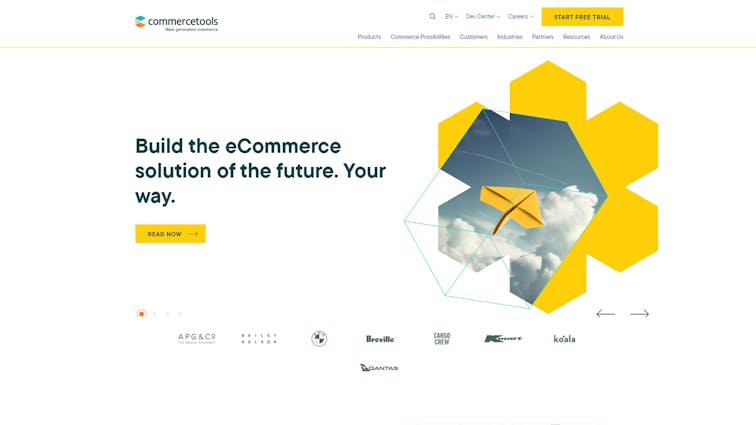
Key Features
- Commercetools is a headless commerce platform that provides businesses with the building blocks to create their own unique commerce experiences.
- It offers a range of features including a flexible API, cloud-native architecture, and a wide range of integrations.
Pros
- Commercetools is highly flexible and customizable, allowing businesses to create a unique online store that fits their brand.
- It offers a wide range of integrations, allowing businesses to connect their online store with other business systems.
- Commercetools is cloud-native, which means it can scale easily to meet the needs of growing businesses.
Cons
- Commercetools may be complex to set up and manage, especially for businesses without a dedicated IT team.
- The cost of using Commercetools can be high, especially for small businesses.
Pricing
- Commercetools pricing is not publicly listed. It is recommended to contact Commercetools directly for a quote.
7. Salesforce Commerce Cloud
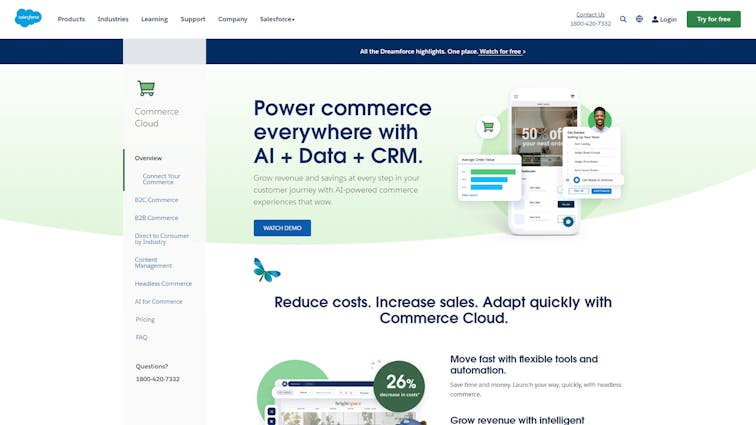
Key Features
- Salesforce Commerce Cloud is a cloud-based commerce platform that supports online retailers in marketing, merchandising, shopping experience, fulfillment, customer service, and more.
- It offers both B2C and B2B commerce solutions, providing a unified platform for all commerce needs.
Pros
- Salesforce Commerce Cloud offers a comprehensive set of features for both B2C and B2B commerce.
- It is part of the larger Salesforce ecosystem, allowing for seamless integration with other Salesforce products.
- Salesforce Commerce Cloud offers strong support and resources for users.
Cons
- Salesforce Commerce Cloud can be expensive, especially for small businesses.
- It may require a steep learning curve, especially for those not familiar with other Salesforce products.
Pricing
- Salesforce Commerce Cloud’s pricing is not publicly listed. It is recommended to contact Salesforce directly for a quote.
8. OpenCart

Key Features
- OpenCart is an open-source eCommerce platform that allows businesses to set up and manage their online store.
- It offers a comprehensive set of features, including a responsive admin area, product options, multi-store support, and multiple payment gateways and currencies.
- OpenCart also supports thousands of extensions and themes to enhance and customize the online store.
- Offers built-in order management, sales reports, and marketing tools.
Pros
- OpenCart is free to use, making it a cost-effective solution for small businesses.
- It has a user-friendly interface, making it suitable for both beginners and experienced users.
- The platform has a vast community support forum, providing easy access to help and resources.
Cons
- OpenCart may require a certain level of technical knowledge for more advanced customizations and integrations.
- Additional plugins and themes can have costs associated with them, potentially increasing the overall cost of using OpenCart.
Pricing
- OpenCart is a free open-source platform, but costs can arise from hosting, domain, and additional extensions or themes.
9. PrestaShop
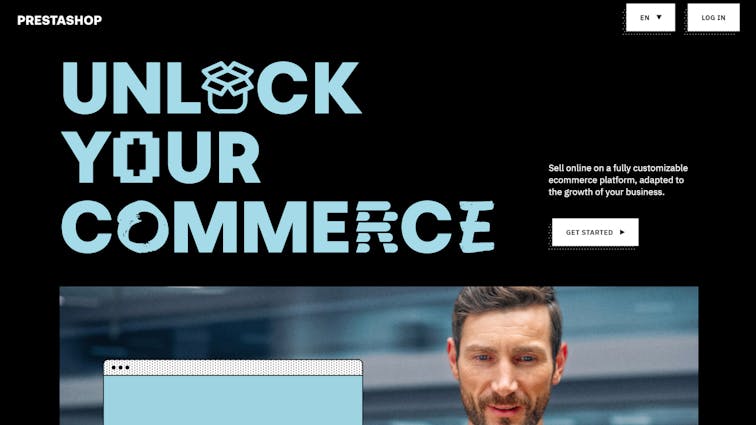
Key Features
- PrestaShop is an open-source eCommerce platform, offering a wide range of features for setting up and managing an online store.
- Comes with a built-in product and inventory management system, one-page checkout, and powerful SEO capabilities.
- Boasts a large library of themes and modules for customization and easy integration with third-party services.
- Supports multiple languages, currencies, and tax configurations, making it suitable for businesses operating in multiple countries.
Pros
- PrestaShop is free to use, making it an affordable option for small businesses.
- The platform has a user-friendly interface, ideal for both beginners and experienced users.
- There’s a large and active community for support and resources, providing help with issues and customization.
Cons
- PrestaShop may require some technical knowledge for advanced customization and integration.
- Additional modules and themes can have costs associated with them, potentially increasing the overall cost of using PrestaShop.
Pricing
- PrestaShop is a free open-source platform, but costs can arise from hosting, domain, and additional modules or themes.
10. 3dcart
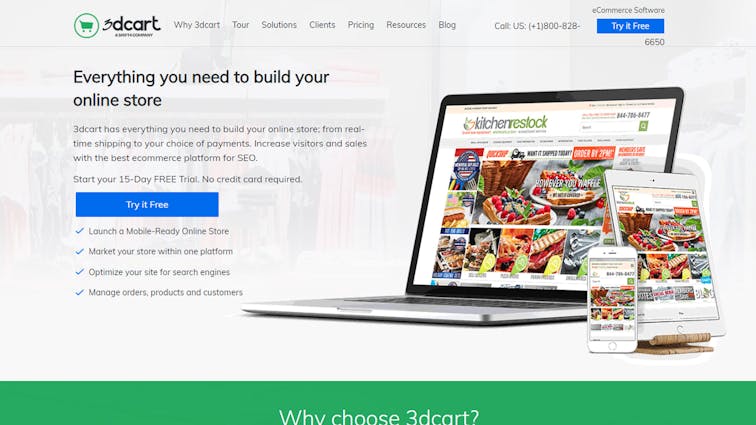
Key Features
- 3dcart is a feature-rich eCommerce platform that allows businesses to build, manage, and grow their online store.
- Offers extensive marketing tools, including SEO optimization, email marketing, social media integrations, and abandoned cart recovery.
- Supports multiple payment gateways, currencies, languages, and shipping carriers, making it suitable for businesses operating in multiple countries.
- Provides a range of templates and themes, allowing businesses to easily customize the appearance of their online store.
Pros
- 3dcart is an all-in-one solution, eliminating the need for additional software or plugins.
- It has a user-friendly interface, suitable for both beginners and experienced users.
- The platform offers excellent customer support, along with extensive documentation and resources.
Cons
- Some users have reported that 3dcart can be challenging to navigate, with a steep learning curve.
- Additional themes and advanced features can have costs associated with them, potentially increasing the overall cost of using 3dcart.
Pricing
- 3dcart offers several pricing plans, starting at $19/month for the Startup plan, $29/month for the Basic plan, $79/month for the Plus plan, and going up to $229/month for the Pro plan. Premium and Enterprise plans are also available with custom pricing.
Conclusion:
In conclusion, there are numerous eCommerce platforms available to cater to the diverse needs of businesses, ranging from small startups to large enterprises.
When selecting an eCommerce platform, it is crucial to consider factors such as pricing, ease-of-use, scalability, customization options, support, and integration capabilities.
By carefully assessing these factors, businesses can make an informed decision and choose the most suitable platform to support their long-term growth and success.








